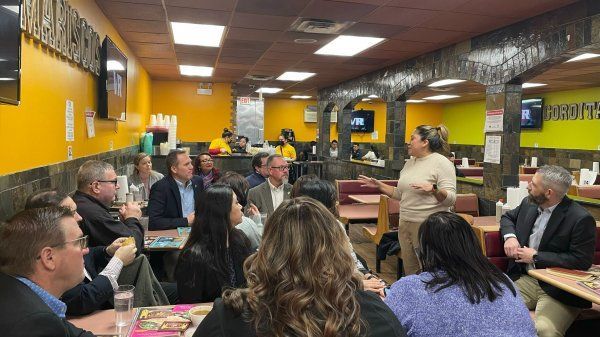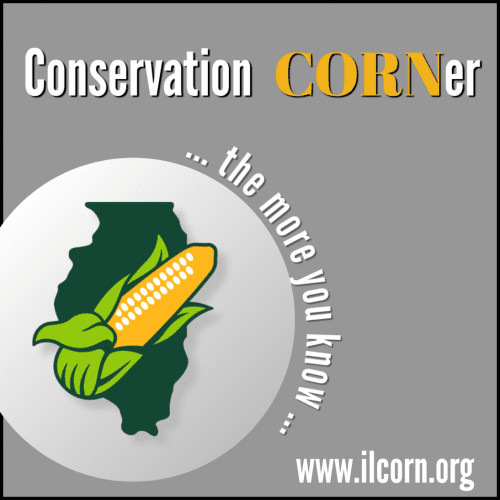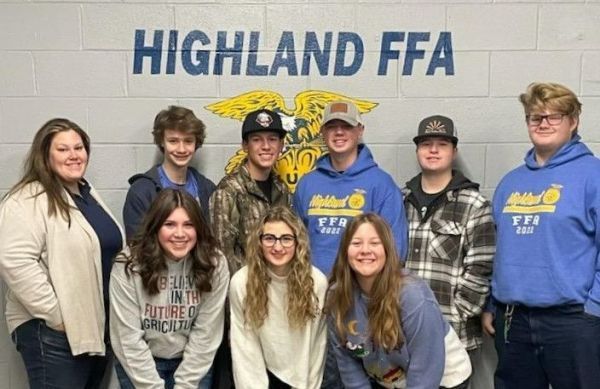Featured Article

January 31, 2023
In a briefing for members of Congress and staff today, corn farmer leaders told U.S. officials to continue to hold the line with Mexico over a proposed ban that would block most U.S. corn imports into that country, landing a blow to the American economy, The statements included praise from corn farmers for the Biden administration’s most recent action, which took a tough position with Mexico over the proposed ban. Mexican President Andrés Manuel López Obrador announced in late 2020 that he would implement a decree banning biotech corn into the country, beginning in early 2024. The vast majority of U.S. corn is biotech. The briefing, hosted by the National Corn Growers Association, was held on the one-year mark from the decree’s effective date. “This decree would cut most American corn growers off from what has historically been our largest export market,” NCGA President Tom Haag noted after the briefing. “That’s why it is extremely important that U.S. officials continue to ensure that Mexico lives up to its commitments under the U.S.-Mexico-Canada Agreement (USMCA).” Haag was joined on the panel by Andy Jobman, farmer and chair of the Nebraska Corn Growers Association; Representative Adrian Smith (R-Neb.); and Jason Hafemeister, acting deputy for trade at the U.S. Department of Agriculture (USDA). Over the fall, NCGA launched an effort to encourage the Biden administration to file a dispute settlement under the USMCA if López Obrador moves forward with the decree. According to forecasts, the ban on biotech corn would cause the U.S. economy to lose $73.8 billion over ten years in economic output along with 32,217 jobs annually with labor income falling $18 billion. “The export market is the largest market for Illinois corn farmers,” said Matt Rush, IL Corn Growers Association President and farmer from Fairfield, IL. “If this proposed ban is allowed to come to fruition, it will doubtless impact Illinois corn farmers in significant ways. Even if the ban is altered to impact only white corn, our office estimates that over 2.3 million bushels or about 11,000 acres of Illinois-grown white corn was exported to Mexico in 2022. This is an issue we can’t afford to ignore.” The Biden administration began talks with Mexican officials late last year and Mexico offered a revised decree. Last week, President Biden dispatched senior aides from the U.S. Department of Agriculture and the office of the U. S. Trade Representative (USTR) to Mexico City to meet with officials in the López Obrador administration. In a statement following the meeting, USTR and USDA officials said the revised decree offered by Mexico to date was not sufficient. The officials said they made it clear to their Mexican counterparts that they are considering all options, including taking formal steps to enforce the issue under the USMCA. NCGA applauded the Biden administration for rejecting the most recent proposal, which would have undermined science-based regulatory principles, violated USMCA and set a negative global precedent. Panelists during today’s briefing echoed that sentiment.

January 26, 2023
NASA doesn’t disappoint with their famous Hyperwall. NASA's Hyperwall is a video wall capable of displaying multiple high-definition data visualizations simultaneously across an arrangement of screens. Functioning as a key component at the NASA exhibit at Commodity Classic, the Hyperwall will be used again to help explain agricultural examples of world change. Last year, Dr. Laura Gentry,Director of Water Quality Science at IL Corn, was invited to speak using this extraordinary technology and had a packed house as she spoke on Precision Conservation Management (the conservation program in Illinois). PCM uses on site data to help farmers make better management decisions that improve soil health, water quality and address climate change concerns.
January 26, 2023
Carbon Capture & Storage Technology (CCS) offers Illinois ethanol production a unique advantage, allowing competition with electric vehicles. The advantage stems from the Illinois Basin, a geological formation which includes Mt. Simon , a sandstone saline reservoir. For over ten years, ADM and the U.S. Department of Energy have successfully stored compressed CO2 from a Decatur, IL ADM ethanol plant in the reservoir. The porous sandstone feature of Mt. Simon, which lies below layers of impermeable shale rock, creates an ideal location for long-term CO2 storage. The basin becomes a competitive advantage for Illinois to capitalize on CCS. CO2 Storage is Important for Ethanol Production The ethanol industry consumes more than 700 million bushels of corn per year. The amount of carbon it takes to produce ethanol is important for Illinois farmers and the future of the ethanol industry. A low carbon score, known as the carbon intensity (CI) score, creates domestic and export opportunities for Illinois farmers. When the technology meets regulatory requirements, and the rights of landowners and drainage districts are respected, CCS technology becomes a necessary tool to protect and grow the ethanol market for Illinois corn farmers. Lower CI creates more sustainable travel Reducing ethanol’s CI score is important as the United States and other countries move towards transportation fuels with a lower environmental impact. CCS technology positions Midwestern ethanol to compete with electric vehicles by lowering ethanol’s carbon intensity score. The technology brings corn-based ethanol’s overall CI score to near or below zero, equal or better than the CI score of electric vehicles. CCS creates a more competitive market for ethanol throughout the country and will potentially open new international low carbon fuel markets for Midwest ethanol. The technology also puts ethanol in a better position to pursue new opportunities like Sustainable Aviation Fuel. A lower CI score can also create additional international trade opportunities. As the world moves towards sustainable travel, this technology allows for ethanol to continue leading the way in low-carbon transportation.

January 26, 2023
IL Corn Growers Association (ICGA) leaders connected with the Illinois Legislative Latino Caucus last week and discussed corn’s impact on the Latino community. State elected officials joined IL Corn for a cooking demonstration at Carniceria Aguascalientes, a Hispanic restaurant and grocery store in the Chicagoland area. IL Corn’s event precedes this week’s meetings between United States and Mexican agricultural trade representatives regarding Mexico’s potential ban on genetically modified corn.

January 12, 2023
While many of us are waiting for a precipitation recharge, the U.S. EPA has released it’s final WOTUS (Waters of the United States) rule. If you recall, back in August of 2021 the EPA and Army Corps announced they were going to start the process of updating WOTUS. There were changes under the Obama administration, Trump administration, and now under the Biden administration. To say we want and need a lasting and consistent rule is an understatement. At the end of August 2021, Jim Reed, Illinois corn farmer from DeLand and IL Corn volunteer leader, provided comments during an EPA hearing. In May of 2022, Megan Dwyer, IL Corn Director of Conservation and Nutrient Stewardship, participated on one of the selected regional round tables to discuss impacts of a proposed rule change. What does this new rule mean and what’s next This final rule will go into effect around March 15, 2023. We are closely watching the Supreme Court for a ruling on the Sackett v EPA case and expect that to come prior to March 15. That ruling could have significant impact on the EPA’s final rule, requiring major revisions. We would also expect industry lawsuits challenging this new WOTUS rule. To start with the positives. Several items were excluded from the final rule but the devil will be in the details of agency interpretation and implementation. A few of those items include: Prior converted cropland was omitted but you do need to have a USDA PCC (Prior Converted Cropland) certification for any applicable acreage. Swales and erosional features characterized by low volume, infrequent, or short duration flow Artificial lakes or ponds created by excavating or diking dry land Waterfilled depressions created in dry land incidental to construction activity Hoping to keep the best of both the Obama and Trump era rules, this hybrid creates uncertainty and implementation questions that will impact farmers. Some items of interest include: “Other Waters” must be “relatively permanent” or have a “significant nexus” to other WOTUS to be considered WOTUS (prairie potholes) Ephemeral drainage features will be very subjective and case by case. Precipitation dependent short duration non-jurisdictional features could have what could be perceived as a bed, bank, and ordinary high water mark creating a “stream” and be subject to WOTUS. No definition or quantifier for what constitutes “relatively permanent” flow Lots of room for agency interpretation and definition How do we achieve long-term certainty and clarity on a WOTUS rule? WOTUS is a policy football being thrown back and forth as changes in leadership happen. Consistency comes from Congress stepping up in a leadership role and choosing to compromise for the creation of a clear, concise, and lasting definition of navigable waters. IL Corn will continue to advocate on behalf of what’s best for farmers in IL. If you have comments or questions please reach out to Megan Dwyer .

January 5, 2023
Social Media has changed the way the world sees companies and brands. Videos are a medium that has skyrocketed over the last couple decades and IL Corn is making sure to keep up. Reaching a larger audience in different ways, IL Corn’s newly created TikTok account went viral in 2022. Also new to 2022, IL Corn TV debuted. IL Corn TV is a weekly ag news segment that recounts the previous week’s news. Mostly on youtube, the second highest visited website in the world, IL Corn TV has grown exponentially in 2022 and will continue to be a resource for farmers in Illinois. If you haven’t yet, subscribe to the IL Corn TV youtube channel to get alerts when new episodes are out. Before we fly into the top videos on IL Corn TV, we want to show the best and favorite videos on our other social media platforms. Top 6 Videos click the picture below to view the video Subscribe to IL Corn TV today to stay updated on all things corn. Download the youtube app on your phone to get notifications and alerts.

January 3, 2023
Announcing the Winners 1st Place - Highland FFA Chapter Claire Geiger, the FFA Advisor commented, "The Water Testing Initiative provided a great opportunity for much needed discussions to take place within my classroom. This activity provided a perfect chance to talk with students and inform them about nutrient loss reduction strategies, the 4 R's, as well as eutrophication leading to potential hypoxia zones. Participating led to exposing students to various career pathways, whether they had production backgrounds or not."
Articles
2025
2024
2023
2022
2021
2020

